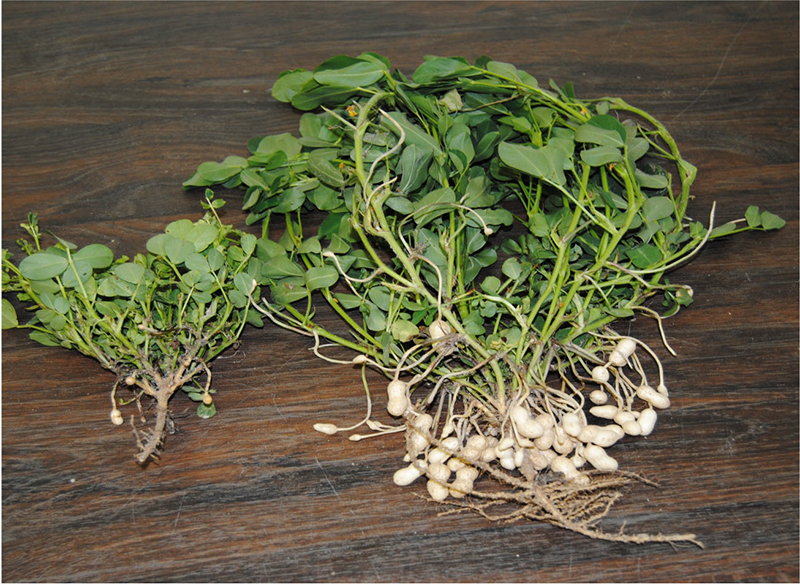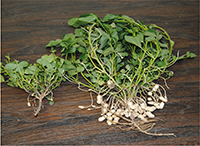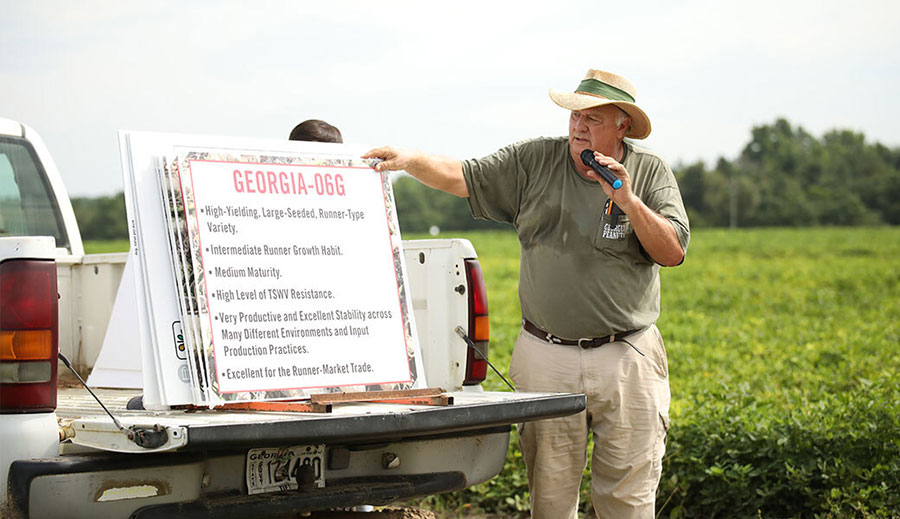With thrips activity at a high level, peanut farmers are advised to closely monitor their peanut seedlings as planting season gets underway, according to University of Georgia Cooperative Extension peanut entomologist Mark Abney.
“No matter what thrips management tactic is chosen, scouting is still a good idea,” Abney said. “No management tactic is 100 percent effective, so the only way to know if there is a problem is to monitor fields on a regular basis.”
Thrips are tiny insects that can spread the tomato spotted wilt virus (TSWV) by feeding on infected plants. Infected thrips then transmit the virus when they move into healthy peanut fields and feed. The virus reproduces within the plants and can be spread as thrips disperse within the field. The virus can dwarf plants and cause significant reductions in peanut yields.
Abney is concerned about TSWV this year. The disease has progressively worsened in recent years. This winter was unseasonably warm, so cold weather did not kill the volunteer peanut plants in some fields. This has allowed the virus, and the thrips, to overwinter. The threat of TSWV is greatest for Georgia peanuts planted prior to May 10, he said.
“For the next two or three weeks, you can expect our peanut farmers to be in the fields, taking advantage of the clear weather and getting the crop in the ground. But they also need to be wary that, in that same timeframe, our thrips levels are expected to rise,” Abney said. “If they are not proactive and (don’t) apply treatments during planting, they need to be scouting their fields for any sign of damage.”
There are several thrips management options available for peanut growers. The chemical phorate (Thimet) is used in furrow, or in the ground with the seed at planting. It is the only insecticide proven to kill thrips and reduce TSWV, Abney said. Imidacloprid (Admire Pro) can be used as a liquid, in-furrow treatment and is compatible with most liquid inoculants and fungicides. Acephate (Orthene) can also be used as a foliar spray to kill thrips after seedlings emerge.
Abney cautions that omitting at-plant insecticides and relying solely on foliar sprays requires careful scouting and the ability to get into the field on short notice to make any necessary chemical applications. He was surprised to learn at a recent meeting that nearly 10 percent of Georgia farmers do not apply at-plant thrips insecticides.
Members of the UGA Peanut Team conducted a survey of random peanut fields last year and discovered significant TSWV damage in some fields.
“It is definitely out there and needs to be addressed. That starts now with planting season already underway,” Abney said.
This season is expected to be another massive growing season for Georgia peanut farmers. There are more than 700,000 acres that are projected to be planted, according to Abney.
TSWV dates back almost 40 years, when it was discovered in Texas. After showing up in Louisiana and Alabama, the disease was detected in Georgia in the 1990s, where it caused widespread damage to the state’s crop.








